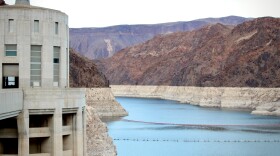-
Cities throughout the Colorado River basin are looking to stretch out their existing water supplies in the face of climate change and steady demand. Some are turning to direct potable reuse, which treats wastewater until it's clean enough to drink.
-
The Supreme Court has ruled against the Navajo Nation in a case centered on the tribe’s rights to the drying Colorado River. The tribe claimed it was the federal government’s legal duty to help figure out their future water needs, and aid them in using their rights. But in a 5-4 decision, the justices said an 1868 treaty included no such promises.
-
In the Southwest, tribal health organizations are finding ways to counter the factors – including the lack of access to clean drinking water – that contribute to high rates of childhood obesity in Native communities.
-
For 40 years, the Jemez Pueblo in New Mexico has been working to access the water they feel they’re owed by the federal government. And those efforts are more urgent than ever as climate change and development continue to affect their water supplies.
-
States that use water from the Colorado River are facing a deadline from the Bureau of Reclamation. If they are unable to agree on cutbacks, the federal government could force use reductions as part of a Supplemental Environmental Impact Statement, or SEIS.
-
The Water Hub, an organization centered on water justice, led a briefing with a team of panelists to share local solutions as the Colorado River faces historic drought.
-
The Colorado River's foundational agreement is 100 years old this month. And while the document among seven western states was groundbreaking for its time, it's currently left the southwest to grapple with a massive gap between water supply and demand.
-
A Nevada water agency has taken the first concrete step toward accounting for evaporation and other losses in the Colorado River’s Lower Basin. The new analysis attempts to pinpoint exactly how much water is lost, and who should cut back to bring the system closer to a balance between supply and demand.
-
States in the Colorado River Basin have failed to meet a federal deadline to conserve an unprecedented amount of water. The lack of consensus on how to wean off the river’s dwindling supply puts the water source for 40 million in the Southwest in jeopardy.
-
Native people have lived in the Southwest for millennia and have traditional ways to manage water that have worked for them. When settlers arrived, they upended that system. Now, tribes in the Colorado River Basin are trying to elevate indigenous approaches to water management.

Play Live Radio
Next Up:
0:00
0:00
Available On Air Stations










